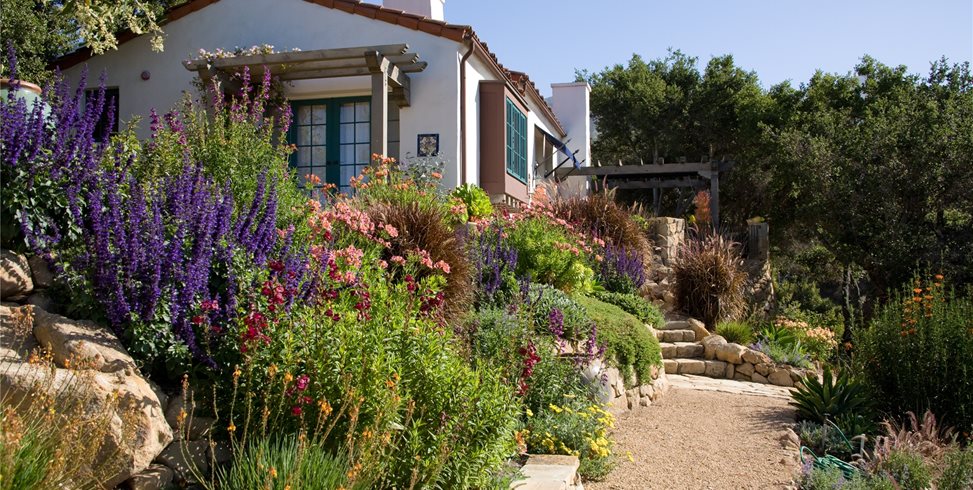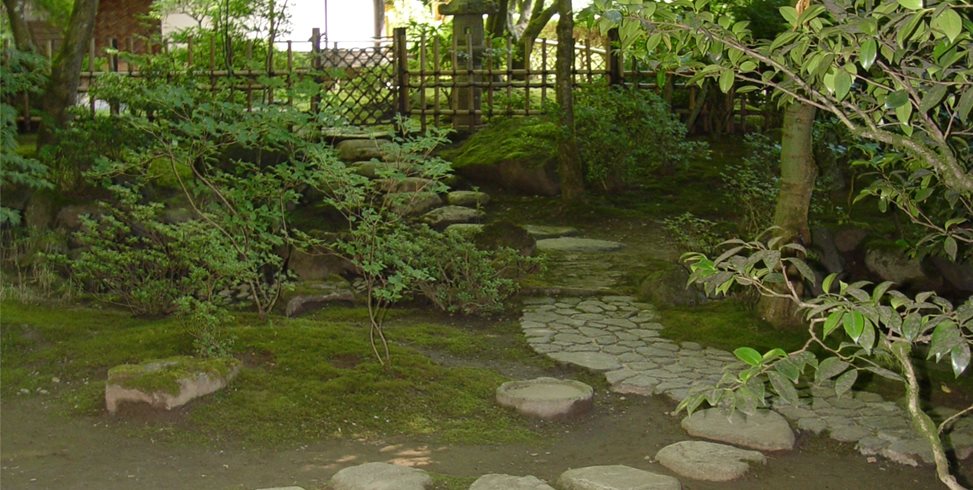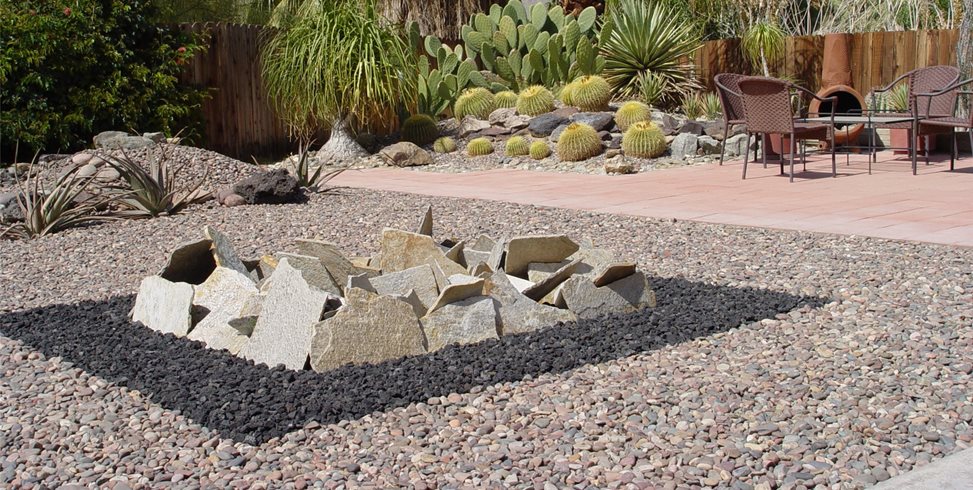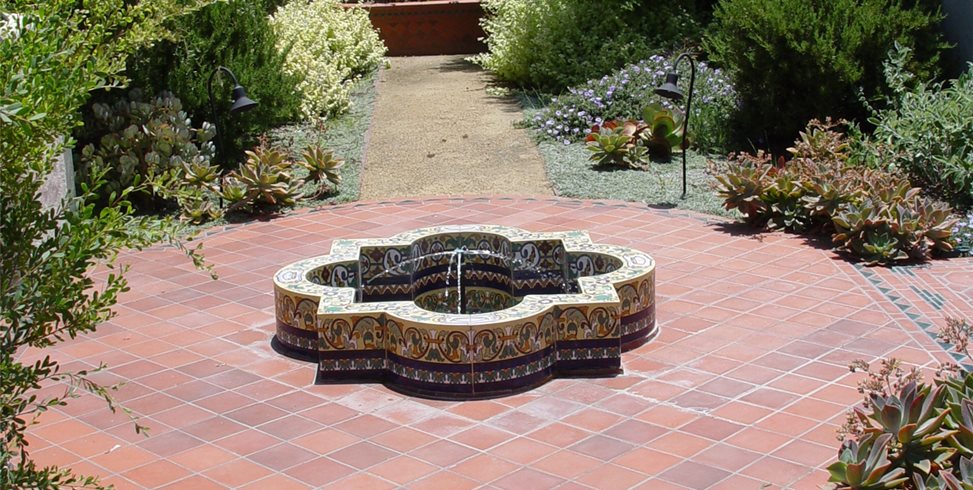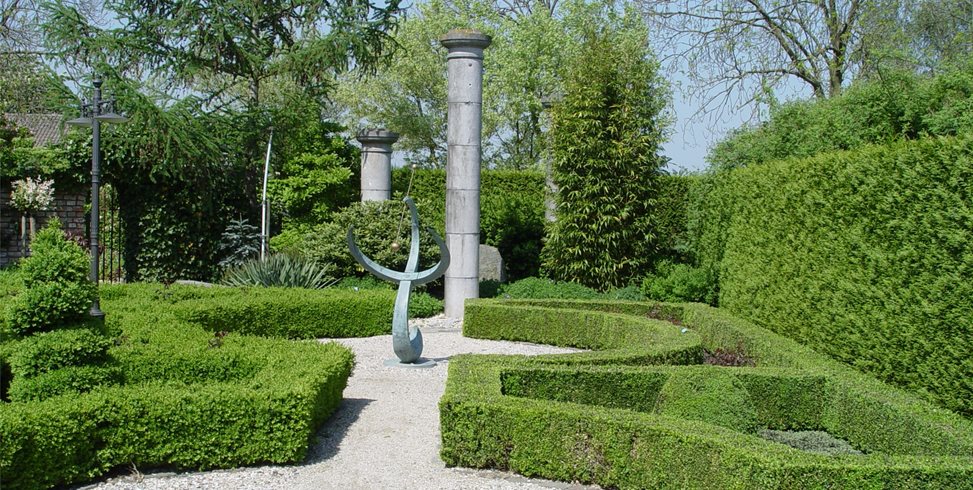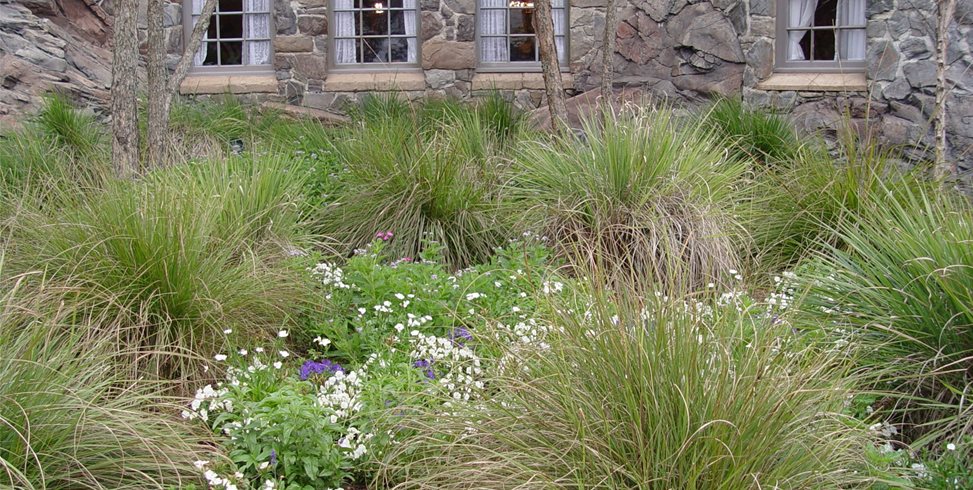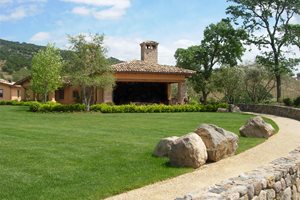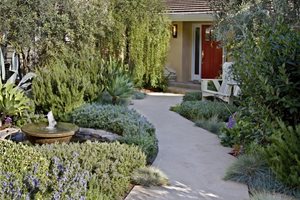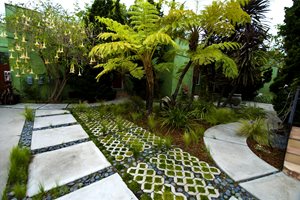Lawn Alternatives
10 ideas for a lawnless gardenWater conservation and green living have led many people to eliminate their turf grass lawns. Though beautiful to look at and play upon, when the cost to maintain them exceeds the overall value, it's time to repurpose that ground. To help you find the right use for this space, we've assembled ten ideas for repurposing your lawn or building a new lawnless landscape.
1. The four-square garden - Rome and Islam
Some of the oldest European gardens feature a simple square of ground broken into four quadrants connected by an intersecting walkway. The design is rooted in the four cardinal directions and references in holy books. The center may be a small or large paved space that traditionally held a fountain. The four planting zones may be filled with trees, flowers, herbs, vegetables and virtually any other attractive plant. This choice is ideal for highly visible yards of small urban or suburban homes.
2. Patterns on the land - English knots, French parterres
In medieval England, the knot garden evolved to grow herbs within castles where they are viewed from windows high above. Woody herbs and small shrubs of varying colors were planted to create a three-dimensional pattern, often that of a Celtic knot. In France, the vast flat lands surrounding the châteaux were laid out in elaborate patterns known as parterres. These choices are ideal for multistory homes with grand views and flat land forms.
3. Potager - Integrated paving, paths and plots
The potager evolved in France as a practical food and herb garden that covers a large area, criss-crossed by walkways for access. Unlike knots and parterres, this garden is not a pattern, but a variety of different sized plots linked by walkways. Potagers are typically quite diverse and include overhead arbors for grapes and other food-bearing plants. This scheme allows the most diversity of planting, from those species useful as food, medicine, or scent; as well as beautiful flowers and roses. This is an excellent option for average-sized suburban yards.
4. Meadow and prairie - Nature's blended grassland
Throughout America, there are various grassland plant communities that are specific to regions and climates. They are not just native grasses, but are blended with perennial wildflowers too. Enormous tall-grass prairies and sparse high-elevation meadows each offer their own look and feel. Rather than a lawn, planting an all-native meadow or prairie with locally native species is an ecologically beneficial alternative to mowed turf. This is a good alternative for very large rural properties, but it can be scaled down to small home sites just as easily.
5. Sward - Rough grassy space or irrigated pasture
What makes a sward unique is its agricultural roots; a grassland not restricted to native species. Blended with perennial grasses are nutritious clovers and other wildlife-friendly plants; it becomes a farm pasture for free range chickens, sheep, goats, and dogs. This makes a good play space for kids too. It may be mowed after flowering is over, or at season's end to remove chaff for winter. Such mowing should be done with the blade set very high so that the root crowns of the plants are not exposed. This is a super alternative for the small urban farmer or a family with animals and kids.
6. Dry stream bed - Art of using stone in a natural way
The dry stream bed is vital to western landscapes where water is limited; it's also found in Asian garden design. This rendition of a natural dry wash in the deserts or mountains is composed of boulders, gravel and sand. It may contain reed-like plants to suggest the presence of water without it actually being there. Grasses also make a fine textured contrast for this arid landscape feature, nesting boulders to make them more natural. A dry stream bed can replace a narrow strip of lawn along the driveway or serve as a large focal point of a backyard. This is a good alternative to lawn after children move away or where water conservation is mandatory.
7. Forest floor - Shade plants and mulch
Beneath the canopy of every forest lies ground covered in a layer of organic litter known as duff. This is a self-sustaining condition that is a good alternative to clearing the trees to start a lawn. The organic matter creates an ideal condition for the trees, and where there is sufficient light coming through, clusters of ferns and shade loving plants become the understory. This is a good alternative for those who are building a new home in wooded areas or wish to make their wooded homesite more natural and low maintenance.
8. Artificial turf - A place for play
The undeniable beauty of turf grass lawn is still possible, but only if you consider artificial turf. It's come a long way since Astro Turf, and it is realistic enough to fool the eye of this professional more than once. Artificial turf makes the perfect surface for kids, pets and adults to play. It's also ideal for golfers and is immune to damage from foot traffic. This is proving a popular surface for pets and regions where extreme drought prevents most other plant-oriented alternatives. This is a good alternative for virtually any home.
9. Outdoor living space - Repurposing space for grown up kids
Empty nesters will find the turf grass yard that once served a family of kids no longer suits their adult needs. Rather than sell the house in a difficult market, redesign the yard to create an adult outdoor living space tailored to your entertaining goals. Lawn may be replaced with porous surfacing materials that reduce runoff, plus outdoor dining patios and perhaps even a kitchen. This is the most reasonable solution for an empty nester who is retooling to prepare for the good life.
10. Bog or pond - Wet and wild
The beauty of a large water garden of blooming lilies is unmatched in landscape design. Plants and fish, plus the wildlife that is drawn to this mini habitat make a fine alternative to a former lawn. No other setting is more contemplative, and this wetland can make an eco-sensitive alternative to a high maintenance lawn. Where drainage is poor it can also become a very specialized type of garden that solves problems. This is the perfect alternative for anyone seeking a truly inspiring environment.

 Backyards
Backyards
 Front Yards
Front Yards
